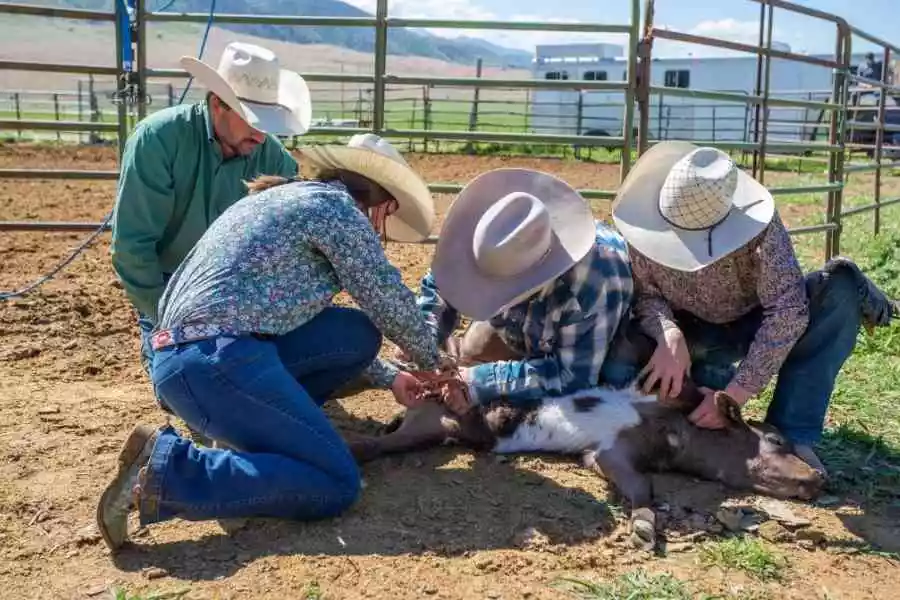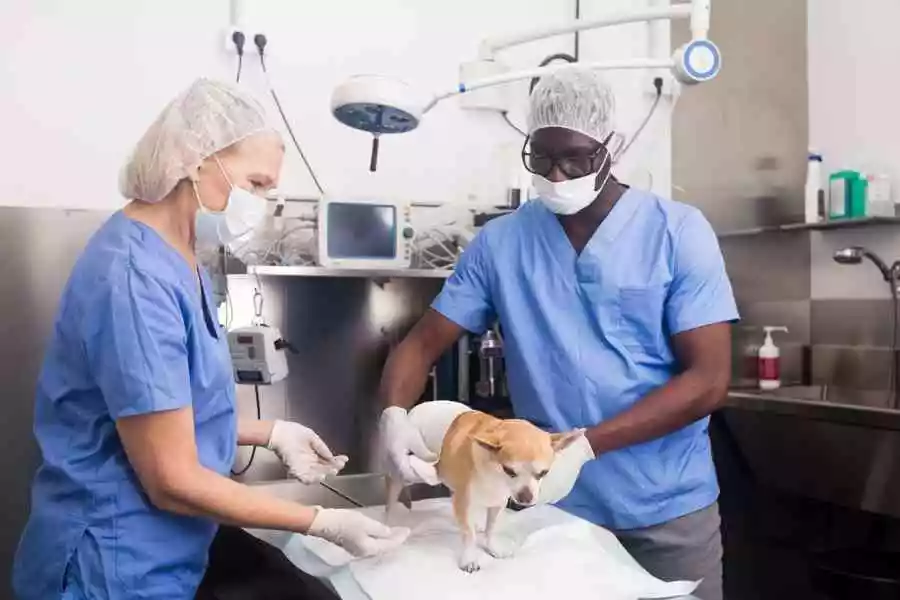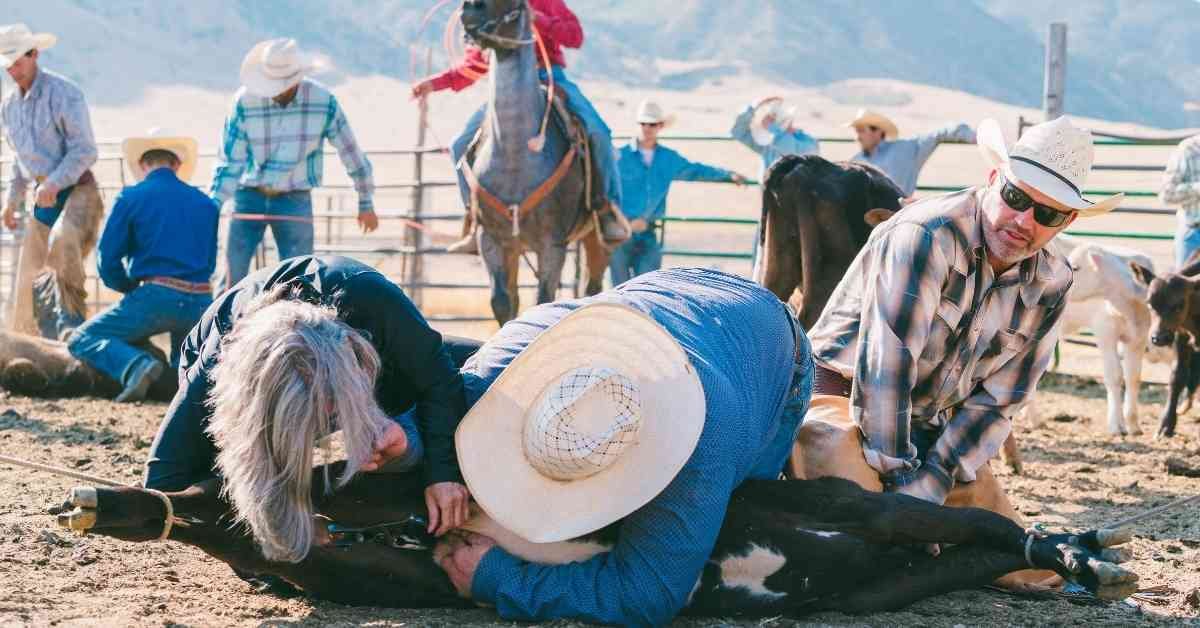Castration is a common practice in the raising of farm animals. There are various methods of castration in farm animals, each with its own benefits and drawbacks. In this post, we’ll take a look at the different methods of castration and their effects on animal welfare. Stay tuned for more information on how to make the best decision for your farm animals!

What is castration?
Castration is the process of removing the testicles of male animals or the process of making them sterile without removing the testes. Testicles are responsible for the maleness and development of male hormones like testosterone.
Generally, castration is performed on animals when they are young. This is because the muscle heals faster at a young age, and the return will also be higher, which ultimately increases the overall profit of the farm. This farm management practice is done primarily on goats, like Damascus Goats for better meat production. Nowadays, poultry birds are also castrated. Bulls are also employed in this procedure to make them more docile. Many pet owners use this procedure on cats and dogs to control their population and aggressiveness.
The person performing the castration must be well aware of the procedure. For example, they could be a farm manager or veterinarian. If done in the wrong way, castration can be fatal to the animals.
Many animal lovers think that the practice of animal castration is cruel. They thought it could cause massive pain. However, that’s not true. Generally, the animals subjected to this procedure are ruminants. Ruminants, unlike other animals, have a high pain tolerance. Thus, they don’t feel too much pain. However, they do feel slight discomfort. For any farm, this procedure is a necessary evil.
Why Is Castration Done?
There are several reasons behind the castration of farm animals. Some of the primary reasons are listed below:
- To prevent unwanted breeding in the flock,
- To prevent inbreeding. Inbreeding is the cross of closely related animals within the same (4-6) generation.
- For better meat production.
- It helps to make males more docile. This way, we can handle the animals easily.
- The males become less aggressive. So, they don’t fight even if kept in the same area.
- There is better skin color development.
- Castrated males fetch higher market prices.
Methods of Castration In Farm Animals
There are several methods of castration in farm animals. However, 2 methods are widely followed:

Bloodless Method
As the name suggests, this method doesn’t involve the flow of blood. It includes:
Emasculation Method
This method involves the use of the Burdizzo Castrator. A Burdizzo Castrator is a stout piece of equipment made up of metal. It has a pressing end and handles. In this method, first, the animal is cast on the soft surface of the ground where the spermatic cord is located. Then, the testicles are slightly pulled down towards the base of the scrotum.
Next, with the help of Burdizzo Castrator, a position is targeted in the spermatic cord, and a punch is delivered. The second punch is done slightly below (0.5 cm below) the first punch. A similar process is repeated in the other spermatic cord. This prevents the flow of semen through the spermatic cord, and the male becomes castrated. Finally, a tincture of iodine is applied over the area punched. This method is the most widely used method of castration of farm animals worldwide.
Note: Castration is the process of throwing animals on the land’s surface using a casting rope. This process helps to fix an animal in a position, which makes the castration process way more manageable and more effective. Animals are cast on the ground before castration.
Rubber Band Method
It is a simple method that uses the proper rubber band. This method uses a tight rubber band on both spermatic cords just above the testes. This tight bind stops the blood flow toward the testes. As a result, the testes dissolve and are absorbed into the scrotum. After they dissolve, the rubber band becomes loose and falls automatically. This method takes time.
Blood/Surgical Method
As the name suggests, this method involves the flow of blood. More precautions should be taken here as there is a greater chance of infection. Generally, an expert like a veterinarian performs surgical methods on animals. It is the second most widely adopted method after the emasculation method. In addition, there are some offices and government organizations that provide the service of surgical castration.

As this method is like an operation, there are requirements for some materials, and proper procedure needs to be followed. Some materials required are:
- Spirit Soaked Cotton
- Acriflavine Solution
- Castration Knife with Two Blades
- Tincture of Iodine
- Sulfanilamide Powder Mixed With Iodoform
The procedure for this method is described below:
First, the animal should be cast on the ground. Then, all the materials and hands should be properly cleaned and sterilized with spirit-soaked cotton. This will kill all the germs and prevent infection. was the scrotum of a male animal with acriflavine solution. This solution acts as an antiseptic.
Then, take a surgical knife or cremation knife and make an incision at the lower side of the scrotum. Let some blood flow. With the help of your hand (with gloves), pull out the testicles along with the spermatic cords. Finally, apply a tincture of iodine and sulfanilamide powder at the site of the cut. Now that the animal doesn’t have testes, castration is completed.
Precautions
- The animal should be cast on soft ground and held in a position with the help of ropes.
- All the materials and hands should be properly cleaned and sterilized.
- Tinctures of iodine should be appropriately applied to avoid infection.
- Castration should be performed on sunny days, not on cloudy or rainy days.
- The castrated animal should be observed carefully for a few days. If there are any signs of infection, it should be appropriately treated.
- The animal can be kept in a separate pen for a few days.
Conclusion
Finally, castration is a beneficial farm management practice. It should be done at an early age for the animal. Proper precautions should be taken, and the animal should have minimum discomfort. It helps to increase the overall farm income.
The skill of castration is one of the most critical skills to be possessed by any person working on a farm. It can definitely give you a better chance of being hired. This skill can be learned if you study BSC Agriculture or Veterinary. However, there are some people and institutions that especially train people to become experts in the castration process within a short span of around one month. This is the complete information. Remember to ask in the comments if you need clarification about this topic. We would love to answer your queries.
